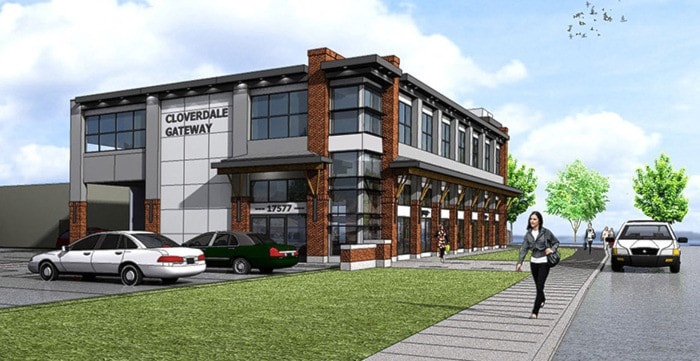A prime piece of Cloverdale real estate that's sat vacant nearly 15 years won't be a patch of dirt much longer.
Construction on the Cloverdale Gateway project is expected to start by late February or early March, according to the building's architect, after Surrey city council approved a final re-zoning application last month.
A two-storey office and retail building at the entrance of the historic downtown core would replace the empty lot that was once home to a gas station.
Burnaby's PJ Lovick Architects firm spearheaded the design featuring brick columns, long wood beams and tall glass windows.
"It will be a great gateway piece," said architect Andrea Scott, adding construction on the corner of Highway 10 and 176 Street should be finished by the year's end.
The site — presently populated by dirt and overgrown plants — sits kitty-corner to the heritage rail car barn and replica train station on the opposite side of Highway 10.
The close proximity of the two locations guided Scott's design process.
"We did need to stay within the heritage railway design ideas, which are the guidelines from the City of Surrey," she said.
"We took a look at some classic railway stations and played off that."
Once it's completed, the building would be the first structure most people spot when driving into the downtown core from Highway 10.
Paul Orazietti, executive director of the Cloverdale Business Improvement Association, said projects like this and the proposed Cloverdale West Village on 175 Street and 57 Avenue have the promise of transforming the neighbourhood.
"The game plan here now is to take the areas west of 176th (Street) and go medium density," he said.
Although there won't be any residential units within the Cloverdale Gateway project, Scott said the multi-storey commercial development still pushes the neighbourhood toward increased densification.
"It brings more commercial revitalization to a community that people would otherwise use as a transient point to go from one point to another," she said.
"Now they're stopping and they're actually making it a node (in) which to use and to make a community."
